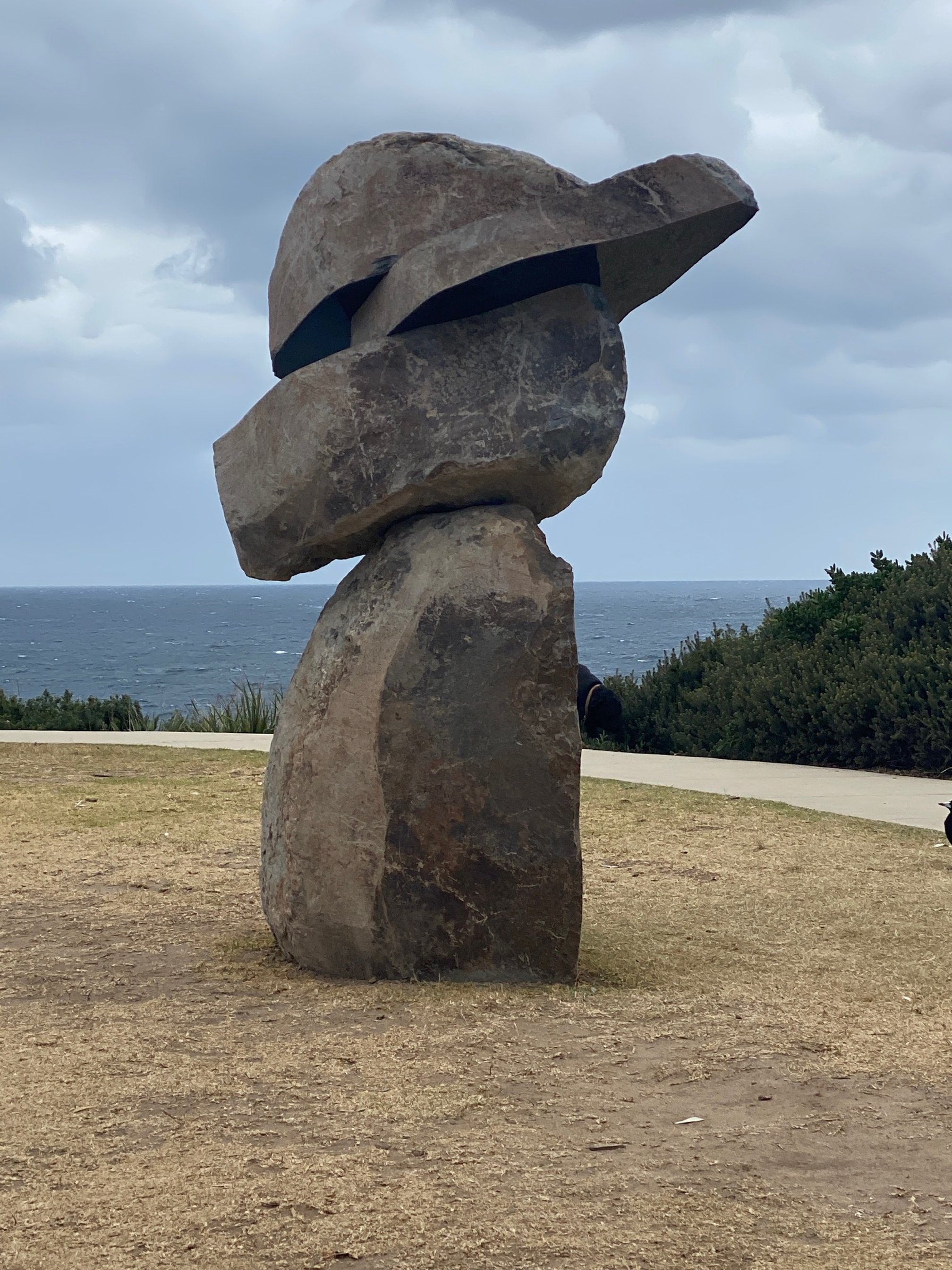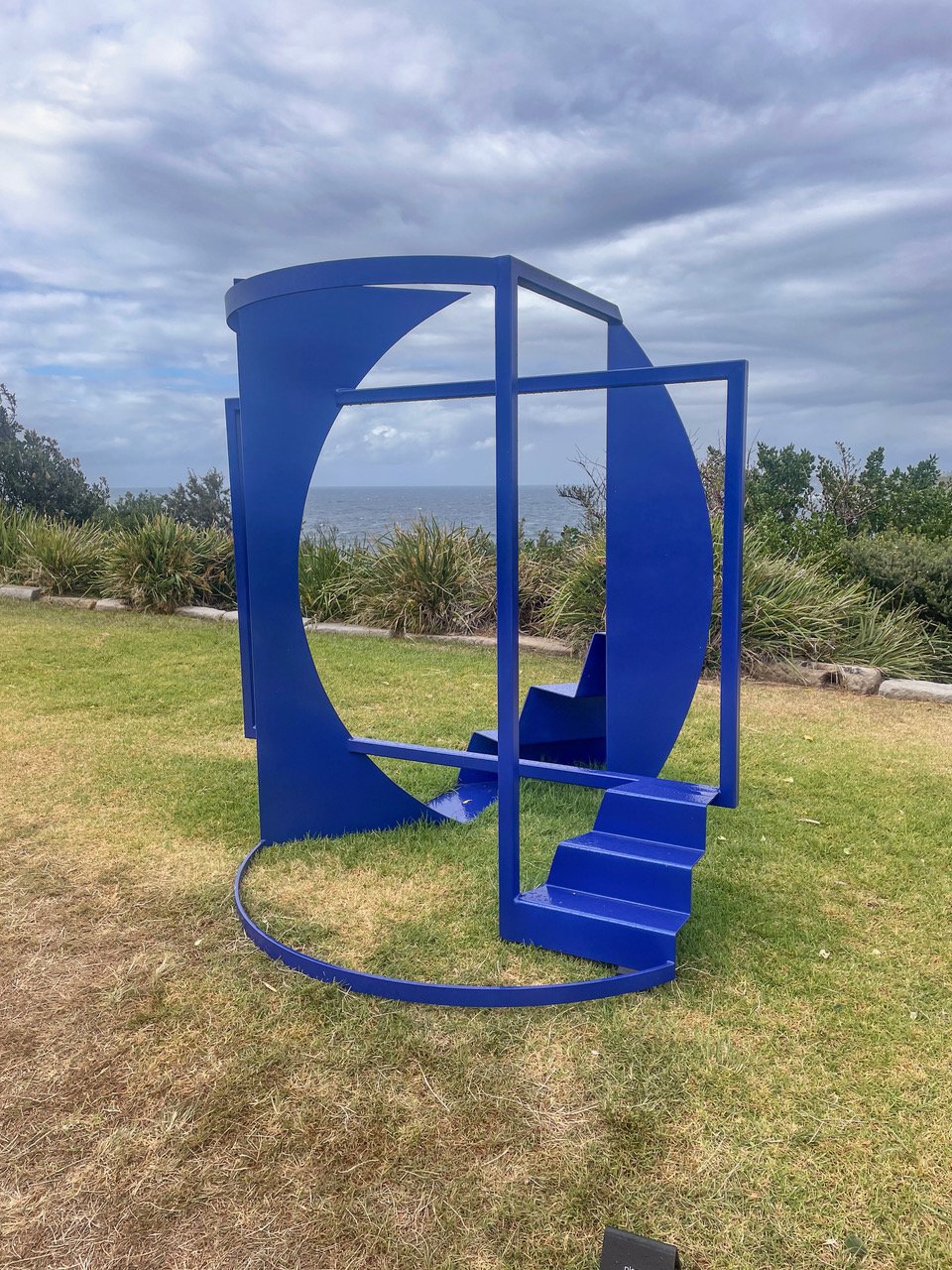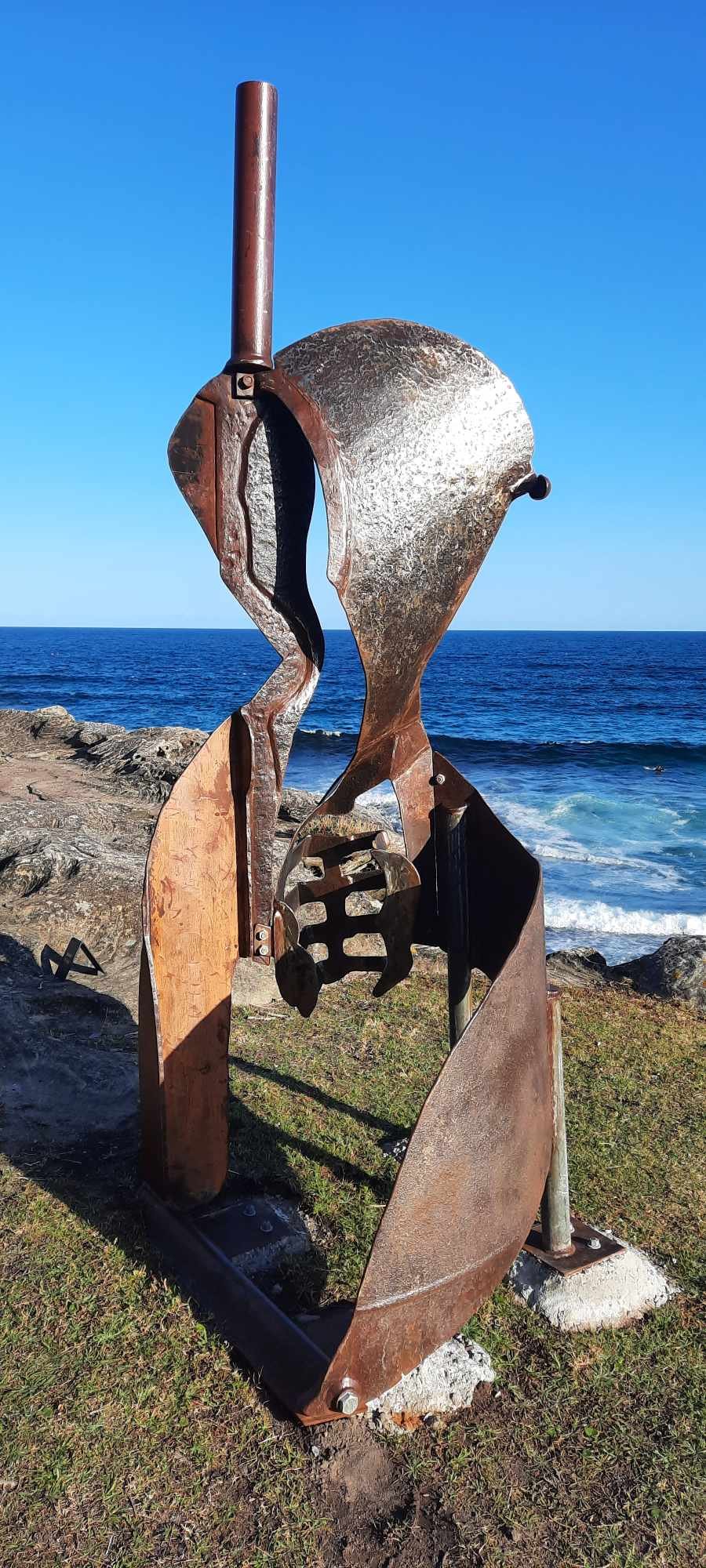Sculpture by the Sea delivers a platform to show the latest works from members of The Sydney School of Sculpture.
Who belongs to this group is determined by me. Members often choose to not identify as members. Whether non-members, fringe members or full members, there is no show that presents a better forum for this group of sculptors. This group has always been and remains the core of work shown at SxS, and is the main reason for the continuing success of the show.
The International works make an important contribution, as do the ecology and installation works. The inclusion of this work along with more novelty works helps to draw audience and sponsorship. This ‘diversity’ may be perceived as enriching or distracting.
I am naming here the works which best contribute to the debate about what sculpture has to offer at SxS 2023 from an SSS perspective.
They are illustrated in no particular order.
In and Of Itself Philip Spelman
All the works listed here are part of the same conversation about what sculpture is. Without the shared conversation, these individual works would not have been made. While several of the sculptors have no connection to Sydney, they are still speaking the broad language with which the ‘SSS’ has been concerned,.
That Line Orest Kewan
There have been better years at SxS Bondi however, there is enough good work here to keep the conversation alive. While there is little critical recognition of the ‘SSS’ contribution, the continuing vitality here confirms the value of principles upheld.
The Past is Just Behind Ingrid Morley
Even despite a determination to be independent of this movement, sculptors are drawn into the conversation either consciously or unconsciously. We are motivated with this show to be the best we can be, to do the best work. Subjective considerations are exposed on the headland and only the very clearly executed works shine.
23.5 Degrees John Petrie
Australiana James Rogers
Dialled North Ben Tooth
The Sydney School of Sculpture is the result of a sustained conversation about what sculpture is. It is unique in that no sculptural conversation has been sustained for this long. While some may argue the sculpture conversation is as long as human history, this more local dialect is at least fifty years long. Other sculptural conversations of the 20th and 21st centuries have been relatively short-lived.
TV Eye Paul Bacon
The SSS can be characterised as being concerned with making sculpture which unifies separate components so that those parts can no longer be distinguished from each other. The sculptures are mostly open form and observe sculptural innovation from the British and American mid twentieth century sculpture. A common sensibility is applied to these histories.
Cheryl’s Night Garden Dave Horton
Cascade Ron Robertson-Swann
This common language among sculptors has taken fifty years to speak coherently. Fluency is a consequence not of the contributions of individuals but of the group, speaking as one. This ideal standard was set in 1905, when Picasso’s and Braque’s sculptures and paintings were mostly indistinguishable from each other or when the identities of New Guinea carvers was irrelevant when enjoying that work. The low demand for sculpture among collectors here, has enabled an evolution of language relatively free from market influences.
Crooked Men from Hurricane Gully Stephen King
Because the SSS has prospered from market resistance, that suggests that continuing health depends upon that lack of support being sustained, even after the SSS is ultimately identified as culturally critical. In a consumer society, success mostly serves as a spoiler.
Castle in The Air Ayako Saito
In The Wind Paul Selwood
Trust Leo Loomans
This richness of conversation could be boosted with the presence of at least three sculptors who choose to not participate here.












